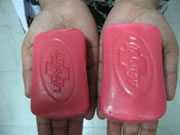Washing Your Hands: Measuring Factors Associated with Respiratory Disease Prevention through Technology
CDC at Work: Water-related Hygiene

There is evidence that handwashing with soap can reduce respiratory disease incidence overall, but its role for prevention of clinically-confirmed disease is uncertain in resource-poor countries like Bangladesh.
CDC’s Respiratory Diseases Branch (RDB) and CDC’s Influenza Division have partnered with the International Centre for Diarrhoeal Disease Research, Bangladesh and the University at Buffalo’s School of Public Health and Health Professions on a case-control study to measure the associations between handwashing with soap and influenza and radiologically-confirmed pneumonia among young children living in an urban area of the capital city, Dhaka, Bangladesh.
The study relies on a community-based surveillance system that tracks influenza and pneumonia in a defined population and provides medical care for households that participate in surveillance.
Handwashing behavior is being measured using strategies designed to accurately record handwashing events and other pertinent data. Field research assistants begin household visits by administering a questionnaire on demographics and illness histories, knowledge of acute respiratory infections, handwashing knowledge, and socioeconomic status. Next, the research assistants conduct a series of observations in the home, recording water availability, sanitation facilities, and handwashing behaviors.
Use of technology is also an important part of the study. Soap use events are detected using bars of soap with a motion sensor (accelerometer) and an embedded data logging device. The soaps are designed to closely resemble actual soaps that are available locally (see photo). The study will examine associations between these behavioral factors and the rates of respiratory diseases. The project completed data collection in April 2010. Data analysis and interpretation are currently underway.
- Page last reviewed: November 26, 2012
- Page last updated: November 26, 2012
- Content source:


 ShareCompartir
ShareCompartir